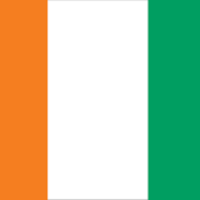Over the past few years, Côte d’Ivoire has undergone a tremendous technological revolution, especially in communication technologies. Communication has advanced in society through the use of mobile phones as well as increased internet usage, which has increased enabling information dissemination and also communication (Mahamadou, 2021). The service availability figures show that by the year 2023, about 46% of the population would have accessed the internet, which is a great deal different from the other years (Dioulo & Sawaneh, 2021). This growth in communication technology is very important for textile industries because, through technological advancement, the industries are able to produce and communicate with other markets of the world (Iloh et al., 2021). In addition, the developments in information technology have presented Ivorian firms with the means to engage in e-commerce; thus, new opportunities with regards to the distribution of apparel and textiles locally as well as internationally have emerged.
However, even today, Côte d’Ivoire continues to experience technological challenges, which mainly affect it in issues relating to sophisticated productive technologies such as manufacturing technologies (Kouakou, 2020). The growth of the textile and apparel industry mainly depends on the traditional techniques of manufacturing; hence, it is not efficient and cannot adapt to scaled-up output. In terms of technology, Côte d’Ivoire has less of it than those technologically advanced countries of the West African region like Nigeria or Ghana (Kareem & Wieck, 2021). Côte d’Ivoire does not experience much technology demand from neighboring countries and does not depend on them for new technologies to improve manufacturing industries (Oyebamiji, 2024). Closing this gap will be imperative for the Ivory Coast to better integrate in the global textile system and for the enhancement of the regional textile enterprise.




